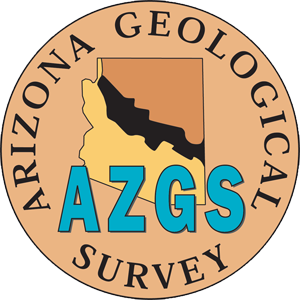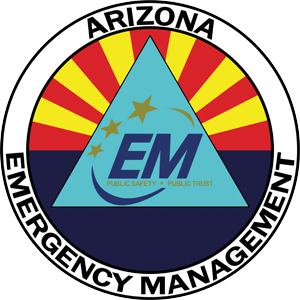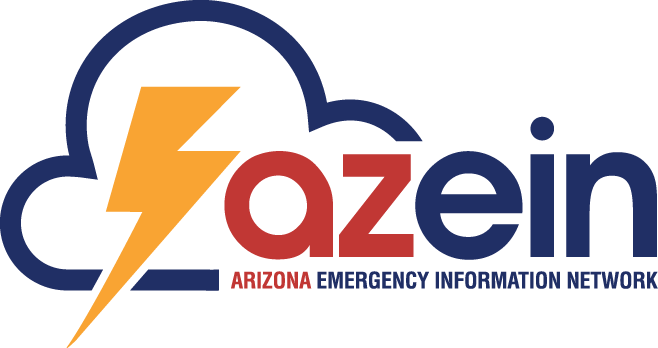- ▾ Other ShakeOuts ▾
- Alaska
- American Samoa
- Arizona
- British Columbia
- California
- Central U.S. (AL AR IA IL IN KS KY LA MO MS NE OH OK TN)
- CNMI
- Colorado
- Guam
- Hawaii
- Idaho
- Japan
- Montana
- Nevada
- New Mexico
- New Zealand
- NorthEast U.S. (CT MA ME NH NJ NY PA RI VT)
- Oregon
- Puerto Rico
- Quebec & Eastern Ontario
- SouthEast U.S. (DC DE FL GA MD NC SC VA WV)
- Texas
- Upper MidWest U.S. (MI MN ND SD WI)
- U.S. Virgin Islands
- Utah
- Washington State
- Wyoming
- Yukon
- Other Countries

Why Should You Participate?
Each time an earthquake occurs in Arizona, the news media and public asks, “Does Arizona have earthquakes?” Short answer: Yes!
In comparison with California, Nevada, and Utah, major earthquakes here are infrequent. But each year, hundreds of earthquakes do occur in and around Arizona. Taking steps now to prepare your family and home will help mitigate the effects of moderate to severe earth shaking.
The Great Arizona ShakeOut is an annual opportunity to practice how to be safer during big earthquakes: "Drop, Cover and Hold On." The ShakeOut has also been organized to encourage you, your community, your school, or your organization to review and update emergency preparedness plans and supplies, and to secure your space in order to prevent damage and injuries.
Learn more below, or read answers to frequently asked questions.
Benefits
Register today so that you or your organization will:
- Be counted in the largest-ever earthquake drill in Arizona!
- Be listed with other participants in your area (Optional)
- Be an example that motivates others to participate & prepare
- Be updated with ShakeOut news and preparedness tips
- Have peace of mind that you, your family, your co-workers and millions of others will be better prepared to survive and recover quickly from our next big earthquake!
EARTHQUAKE HAZARDS
Overview
Young, active faults exist in and around Arizona. The northern Arizona Seismic Belt, which bisects Coconino County, hosts the greatest concentration of active faults in the state and is the most seismically active region in Arizona. Some faults, such as the Lake Mary Fault just south of Flagstaff, are capable of large magnitude earthquakes, up to magnitude 7. Yavapai, Mohave, Yuma, Pima, Cochise, Graham, and Greenlee County all host faults capable of delivering moderate to large seismic events, too. And large earthquakes on faults from surrounding states and Mexico, including California’s San Andreas fault system, are capable of damaging homes and infrastructure and threatening lives here in Arizona.
From fault locations and earthquake records, we know some areas of Arizona are more susceptible to earthquakes than others. The northwestern part of the state has the highest concentration of active faults and seismicity, while Yuma on the California-Arizona-Mexico border has repeatedly experienced ground-shaking and damage from quakes originating in California and Baja California, Mexico. Although these areas are more likely to suffer from earthquake activity, no Arizona community is wholly immune to earthquakes.
Northern Arizona is part of a seismically active region in the Western U.S. referred to as the Intermountain Seismic Belt (ISB), which includes Utah, Nevada, New Mexico, and eastern California. There are numerous active faults in the ISB capable of producing moderate and, less frequently, large magnitude earthquakes. The Northern Arizona Seismic Belt, which extends from the Arizona-Utah border south-southeast of Flagstaff, is a particularly seismically active region.
Arizona is Earthquake Country. Arizona Geological Survey.
Arizona Earthquakes (Dr. Jeri Young presentation to the Arizona County Managers, July 2012)
Arizona Quaternary Faults (Interactive fault map of U.S. - hosted by the U.S. Geological Survey)
Earthquakes in Arizona 1852-2011 (Time-lapse video of earthquake epicenters in Arizona and environs)
Earthquake Monitoring in Arizona: the role of the Arizona Integrated Seismic Network (Video narrated by Dr. David Brumbaugh and Ms. Lisa Linville, 2011)
The Lake Mary Fault: Potential earthquake threat to Flagstaff, Arizona (Video narrated by Dr. David Brumbaugh, 2012)
The Little Chino Fault, Central Arizona (Video narrated by Mr. Brian Gootee, 2011)
The Big Chino Fault, Central Arizona (Video narrated by Dr. Phil Pearthree, 2011)
1887 Sonora Earthquake (Video narrated by Dr. Phil Pearthree, 2011)
Why Drop, Cover, and Hold On?
Why is it important to do a Drop, Cover, and Hold On drill? To react quickly you must practice often. You may only have seconds to protect yourself in an earthquake, before strong shaking knocks you down--or drops something on you. Practicing helps you be ready to respond.
- If you are inside a building, move no more than a few steps, then Drop, Cover and Hold On:
- DROP to the ground (before the earthquake drops you!),
- Take COVER by getting under a sturdy desk or table, and
- HOLD ON to it until the shaking stops.
- If you are outdoors when the shaking starts, you should find a clear spot away from buildings, trees, streetlights, and power lines, then Drop, Cover and Hold On. Stay there until the shaking stops.
- If you are driving, pull over to a clear location, stop and stay there with your seatbelt fastened until the shaking stops. Once the shaking stops, proceed with caution and avoid bridges or ramps that might have been damaged.
Ground shaking during an earthquake is seldom the cause of injury. Most earthquake-related injuries and deaths are caused by collapsing walls and roofs, flying glass and falling objects. It is extremely important for a person to move as little as possible to reach the place of safety he or she has identified because most injuries occur when people try to move more than a short distance during the shaking.
Look around you now, before an earthquake. Identify safe places such as under a sturdy piece of furniture or against an interior wall in your home, office or school so that when the shaking starts you can respond quickly. An immediate response to move to the safe place can save lives. And that safe place should be within a few steps to avoid injury from flying debris.
Further information:






